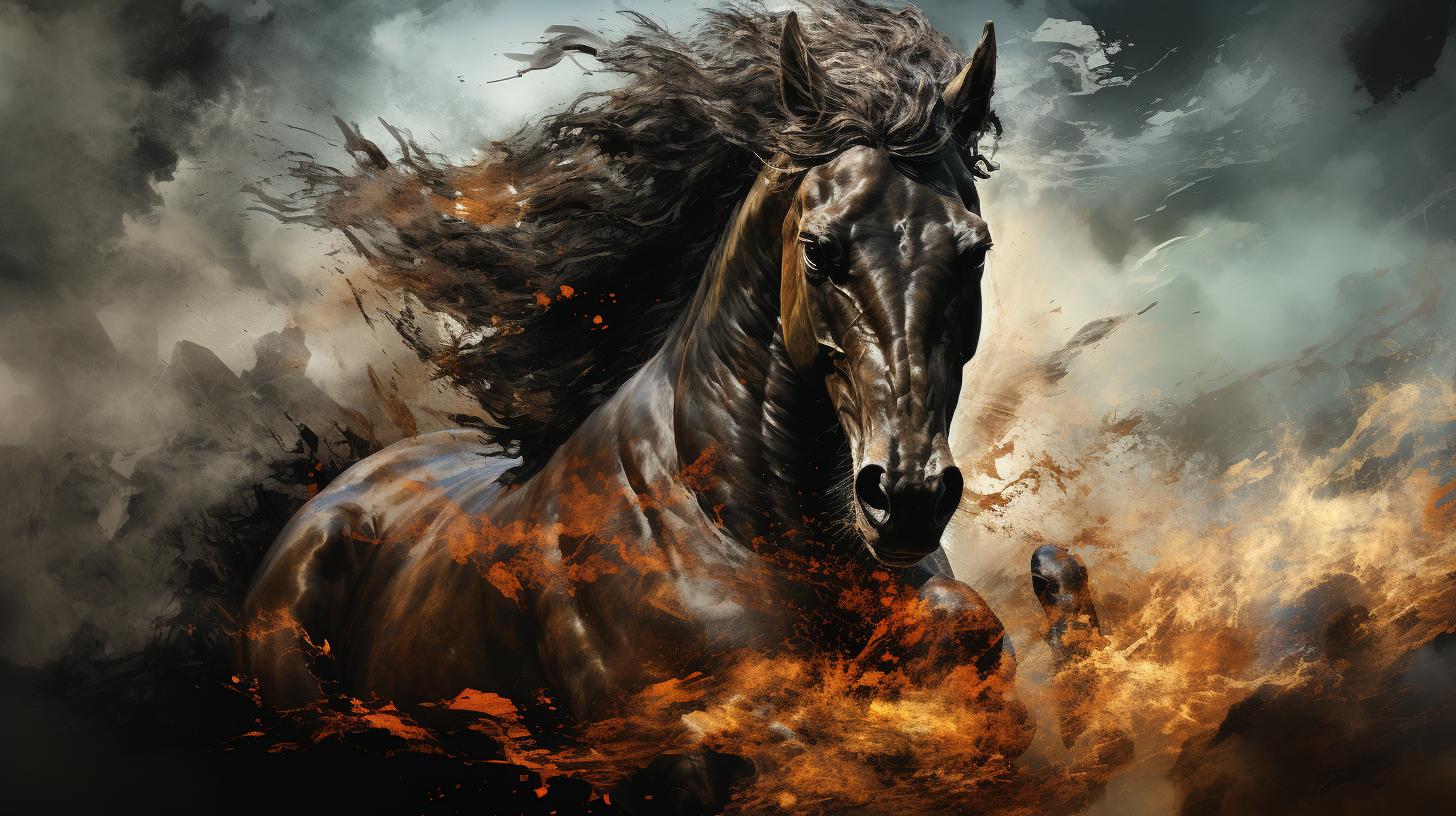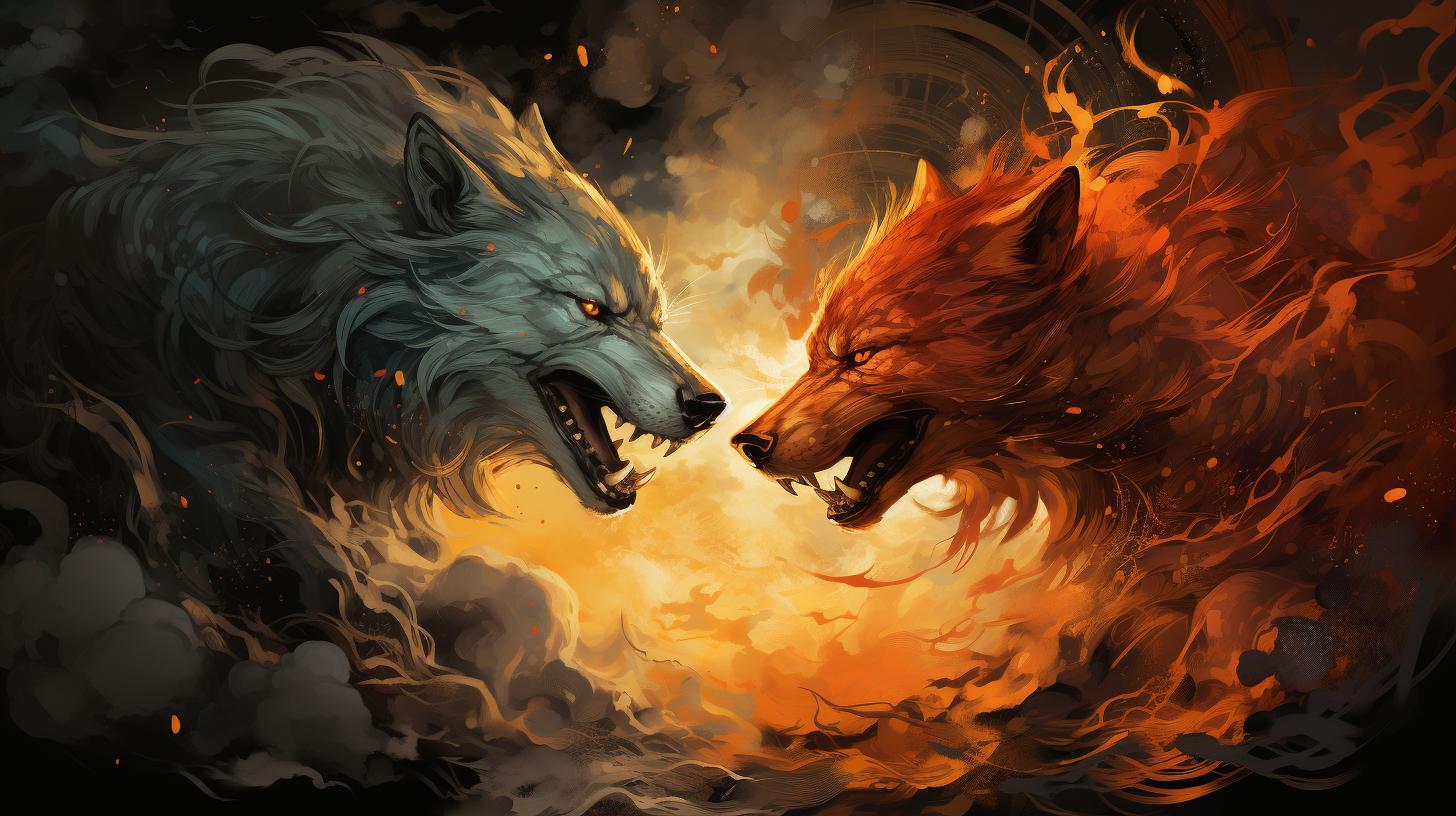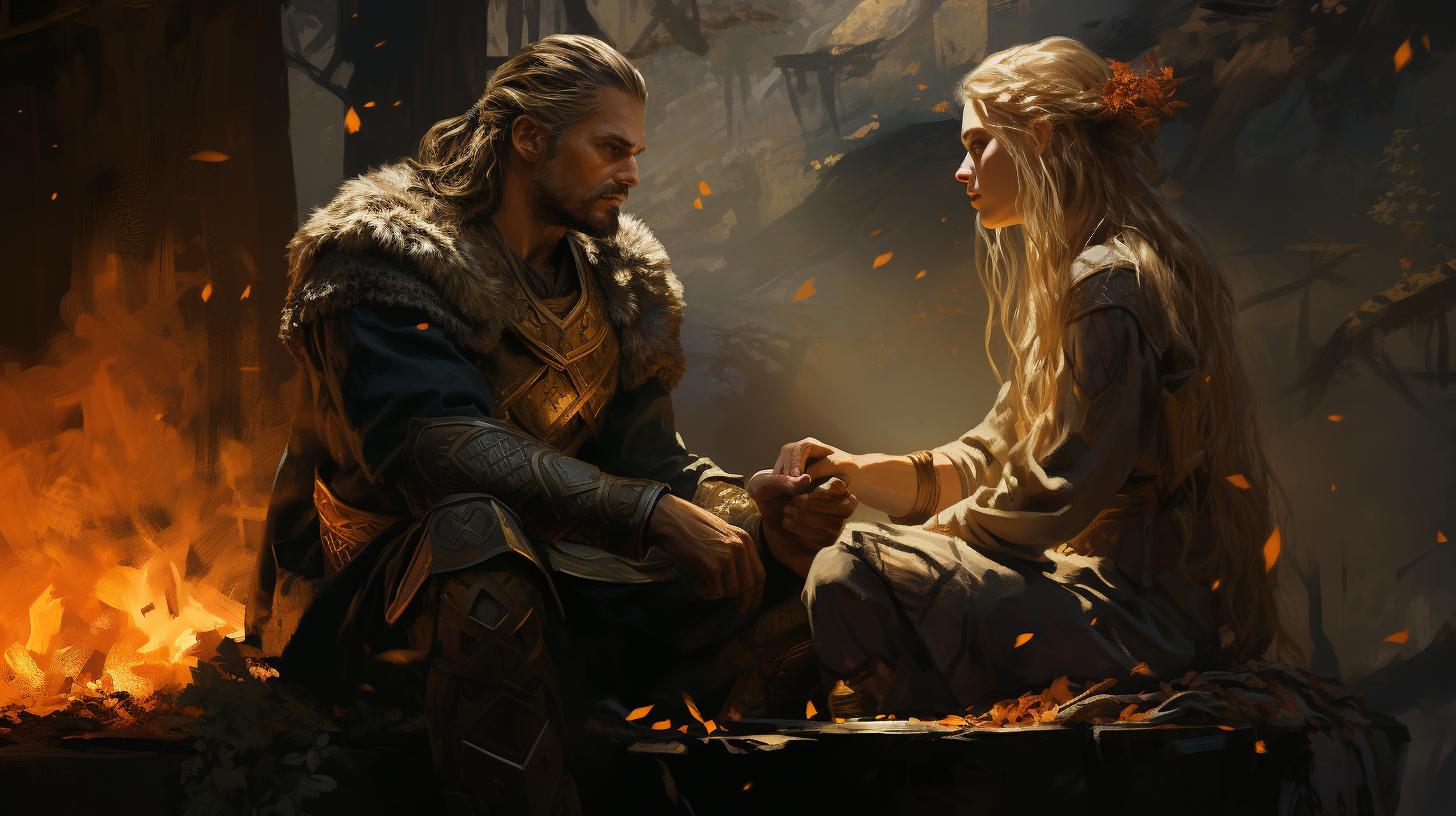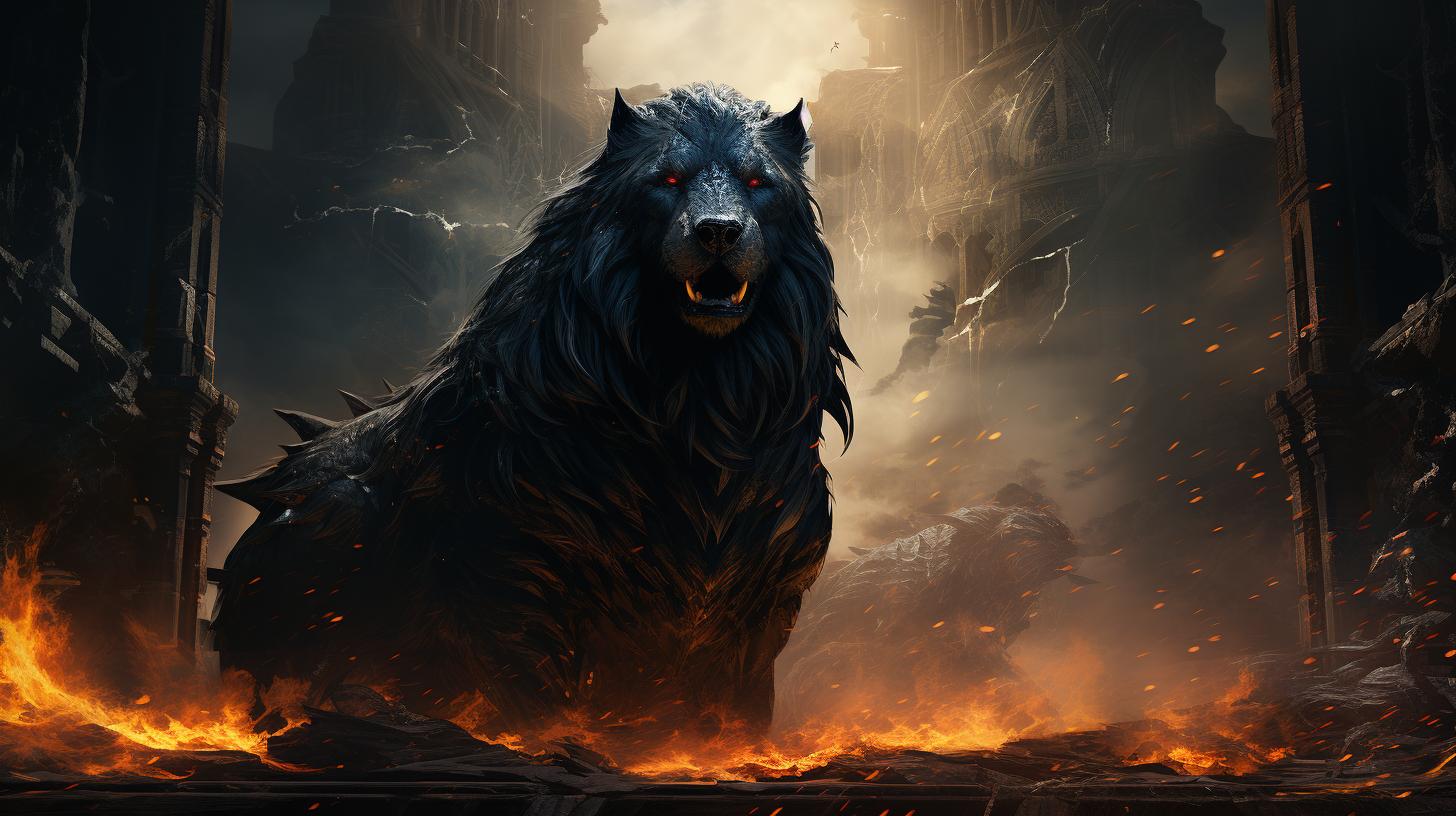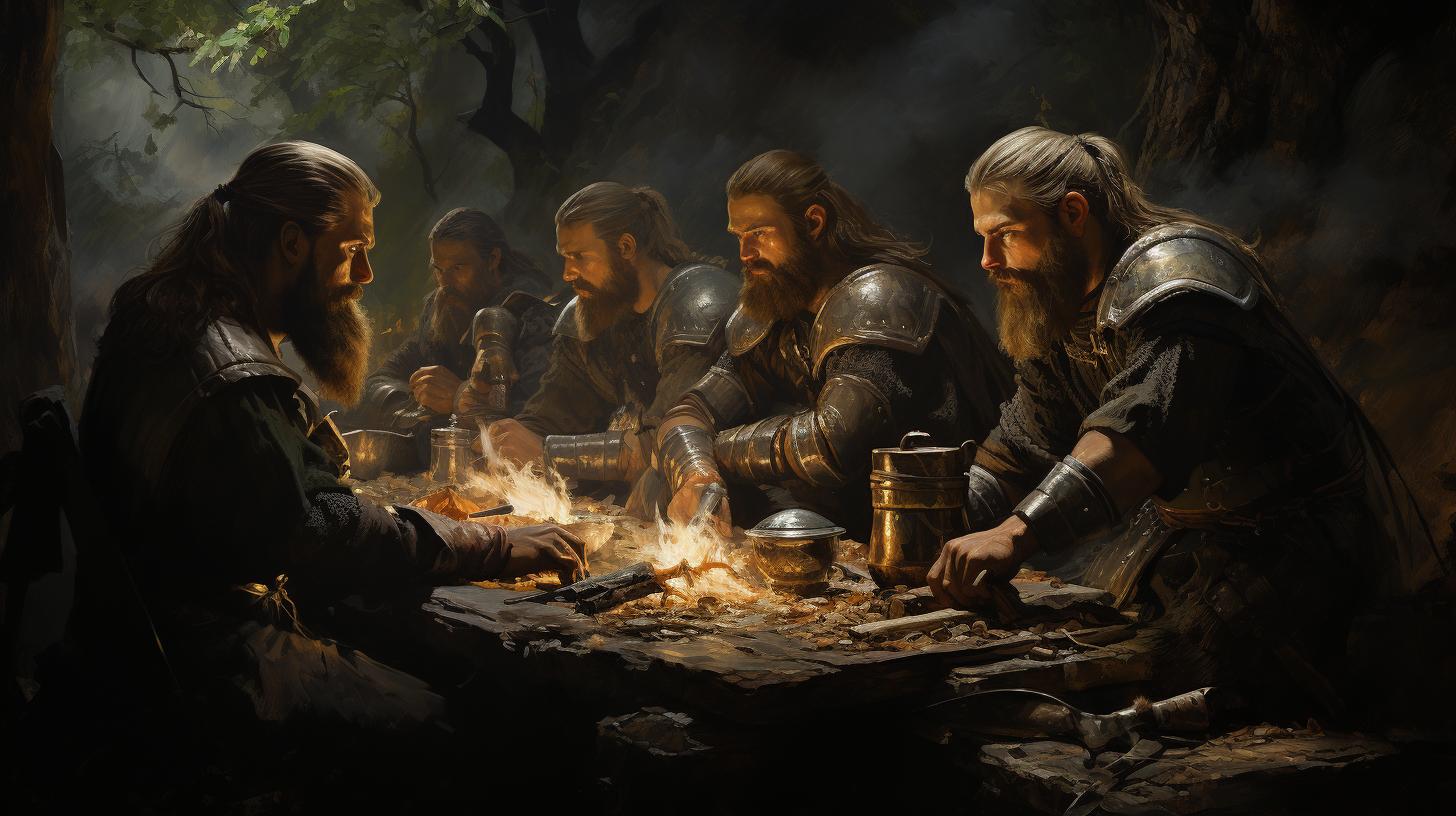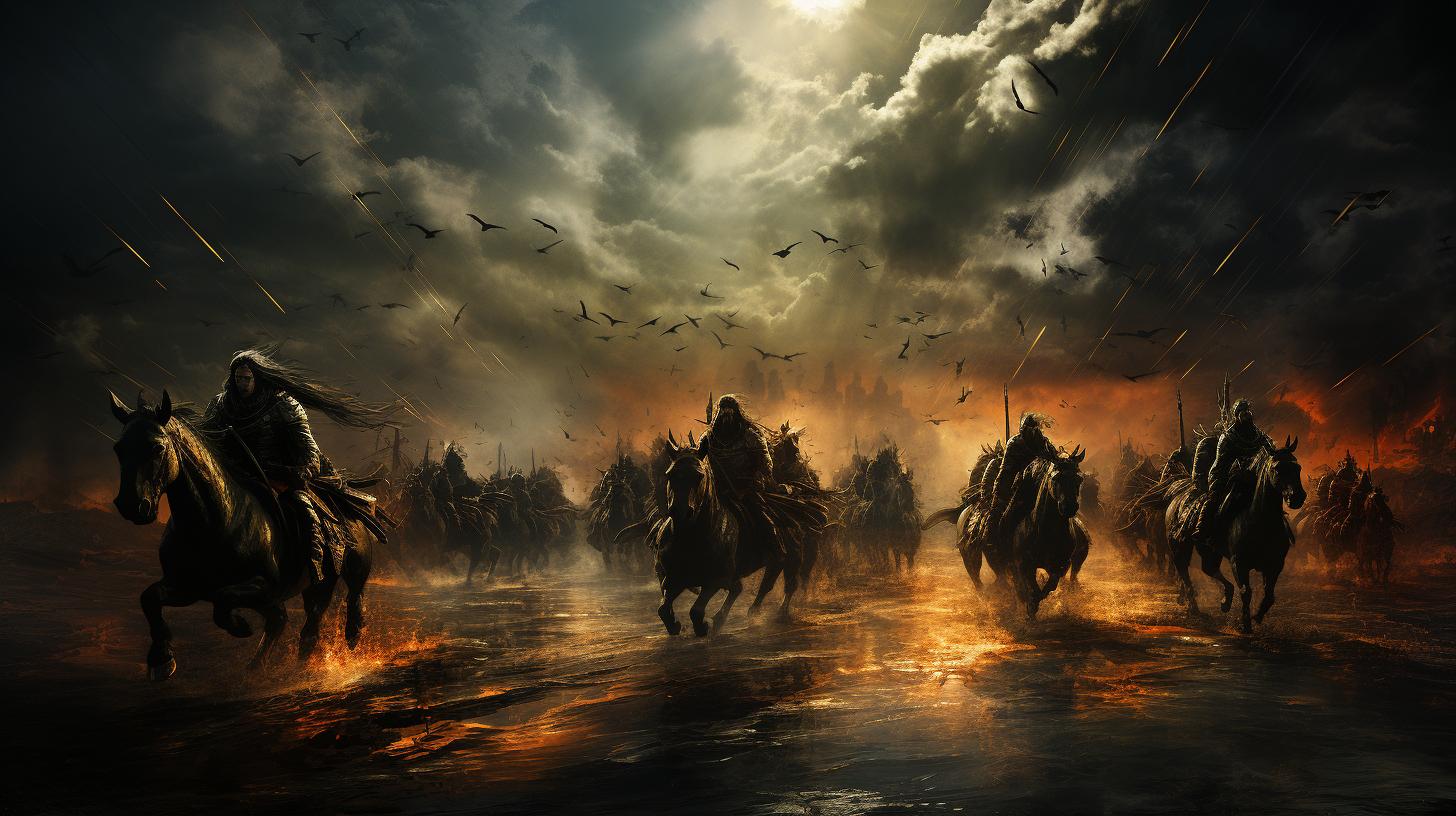Fenrir in Norse Mythology: The Fearsome Wolf of Norse Folklore
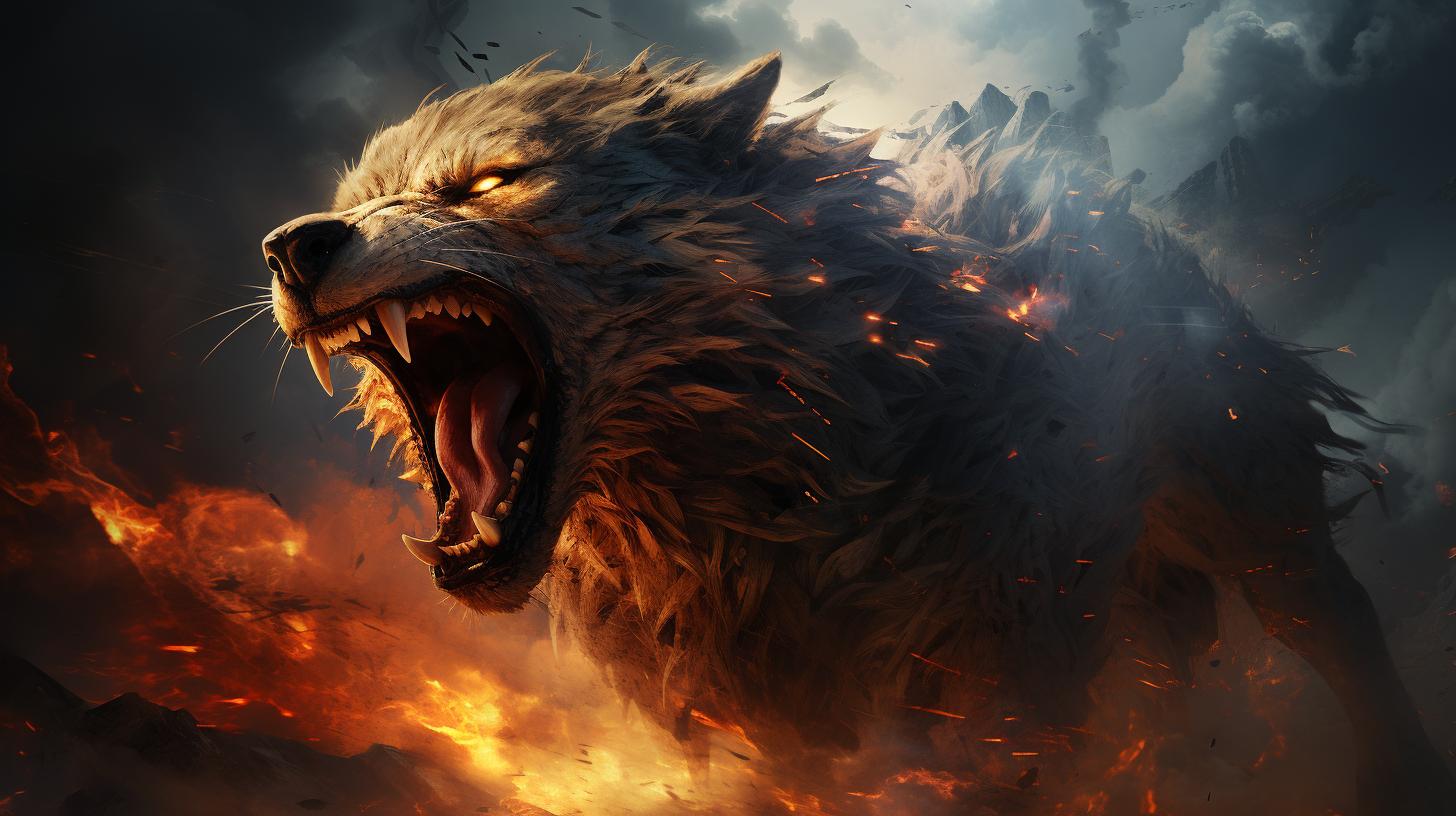
Fenrir, the monstrous wolf of Norse mythology, is a captivating figure that instills both fear and fascination. Born to the demon god Loki and a giantess named Angerboda, Fenrir’s existence caused concern among the gods.
After numerous failed attempts, they eventually bound Fenrir with a magical chain, an unbreakable restraint. Destiny dictated that Fenrir would remain imprisoned until Ragnarok, the fateful Day of Judgement, when he would break free and wreak havoc upon the gods.
Fenrir’s story has left an indelible mark on Norse poetry and Icelandic literature, inspiring artists and writers throughout history.
Unraveling Fenrir: Key Aspects and Symbolism
Unraveling the mysteries of Fenrir, the monstrous wolf of Norse mythology, provides fascinating insights into the rich cultural significance and symbolic nature of this legendary creature.
The Monstrous Appearance and Ferocious Nature of Fenrir
Fenrir’s menacing presence is characterized by his ferocious nature and monstrous appearance.
With his immense size and fearsome countenance, he strikes fear into the hearts of gods and mortals alike. His massive jaws, sharp fangs, and powerful limbs make him a formidable force to be reckoned with in Norse mythology.
Fenrir’s Symbolism in Norse Mythology and its Cultural Significance
Fenrir embodies various symbolic elements within Norse mythology. He represents the primal forces of chaos and destruction, symbolizing the unpredictable and uncontrollable aspects of the natural world. Fenrir’s insatiable hunger for power and his relentless pursuit of freedom mirror the ambition and desire for independence found in human nature.
Furthermore, Fenrir’s role in the prophecies surrounding Ragnarok, the apocalyptic event in Norse mythology, symbolizes the ultimate battle between order and chaos, destiny and fate. His presence serves as a reminder of the inevitable cycle of destruction and renewal that permeates the mythological universe.
Fenrir’s Motifs in Ancient Art and Literature
The enduring myth of Fenrir has inspired artists and writers throughout history, resulting in a wide range of artistic representations and literary works. Ancient depictions of Fenrir often highlight his monstrous form, emphasizing his threatening presence and immense power.
In addition, Fenrir’s motifs can be found in ancient Norse literature, where his character serves as a catalyst for narrative tension and conflict. His interactions with the gods and his eventual role in the events of Ragnarok are explored in sagas, epic poems, and skaldic verses.
- Fenrir’s portrayals in ancient art
- The role of Fenrir in Norse literature
These ancient representations and literary works serve as valuable cultural artifacts, providing valuable insights into the societal beliefs and values of the Norse people.
Fenrir’s Binding and Chained Existence
Fenrir, the fearsome wolf of Norse mythology, provoked great fear among the gods. They grew increasingly concerned about his uncontrollable power and the potential havoc he could wreak. Determined to restrain Fenrir, the gods devised various attempts to bind him and prevent his destructive rampage.
The Gods’ Fear of Fenrir and their Attempts to Restrain Him
The gods’ apprehension towards Fenrir stemmed from his monstrous appearance and ferocious nature. They knew they had to take immediate action to safeguard their realm from his destructive potential. In their relentless pursuit to find a way to restrain him, the gods tried multiple strategies, but each attempt proved futile.
The Magical Chain and Tyr’s Selfless Sacrifice
Finally, the gods turned to a magical chain crafted from mystical elements. This extraordinary chain, composed of intricate components such as the sound of a cat’s footsteps and the breath of a fish, seemed to hold the potential to bind Fenrir.
However, they faced the challenge of convincing Fenrir to participate willingly in being bound.
It was the valiant god Tyr who stepped forward, sacrificing his own hand to earn Fenrir’s trust.
This selfless act showcased Tyr’s bravery and willingness to ensure the success of the binding. With the gods’ combined efforts, they managed to ensnare Fenrir with the magical chain, firmly securing him.
Analysis of the Chain’s Inescapability and Fenrir’s Imprisonment
Despite Fenrir’s tremendous strength and relentless attempts to break free, the magical chain proved to be indestructible. It held him captive, keeping him bound to a massive rock. Fenrir’s imprisonment brought temporary relief to the gods, as they could now rest assured that the wolf’s destructive potential was contained.
Please note that the content provided is a brief summary of the section ‘2. Fenrir’s Binding and Chained Existence’ in an article on Fenrir Norse mythology. It is intended to provide an overview of the topic without delving into other sections or aspects of the subject matter.
Fate of Fenrir: Ragnarok and the Final Battle
The mythological event of Ragnarok holds deep significance in Norse mythology. It is the prophesied final battle where the forces of chaos and destruction clash with the gods, leading to the end and rebirth of the world.
Within this cataclysmic event, Fenrir plays a pivotal role as a harbinger of doom.
Prophecies Regarding Fenrir’s Role in the Apocalypse
The prophecies surrounding Ragnarok foretell Fenrir’s unleashed fury upon the gods. It is said that he will break free from his chains and join the chaos unleashed during this climactic battle.
Tearing through the realms, Fenrir is destined to devour the sun, enveloping the world in darkness, signifying the collapse of the cosmic order.
Odin’s Son Vidar and the Symbolic Victory over Fenrir
In the midst of Ragnarok, Odin’s son Vidar emerges as the embodiment of strength and vengeance.
Foreseen to avenge his fallen father, Vidar achieves a symbolic victory over Fenrir. With his mighty strength and unwavering determination, Vidar pierces the heart of the monstrous wolf or tears his jaws apart, ensuring the defeat of chaos and securing the path for the world’s rebirth.
Fenrir in Literature and Cultural Impact
Fenrir, the powerful wolf of Norse mythology, has left a lasting imprint on the world of literature and popular culture. His menacing presence and role in the Norse pantheon have captivated the minds of poets, writers, and artists throughout the ages.
This section explores Fenrir’s portrayal in Norse poetry and prose, his influence on modern art, literature, and popular culture, and the continued relevance of understanding Fenrir in the broader context of Norse mythology.
Fenrir’s Portrayal in Norse Poetry and Prose
In the rich tradition of Norse poetry and prose, Fenrir’s character is depicted with a sense of awe, fear, and mystery. Poets and writers have captured his monstrous appearance and ferocious nature, as well as delved into the symbolism and cultural significance associated with this formidable creature.
Fenrir’s portrayal in ancient texts offers profound insights into the Norse worldview and their beliefs about the forces of chaos and destruction.
Fenrir’s Influence on Modern Art, Literature, and Popular Culture
Fenrir’s enduring presence in Norse mythology has inspired countless artists, writers, and creators in the modern era.
His image can be found in various forms of art, including paintings, sculptures, and tattoos, portraying both his terrifying aspects and his symbolic significance. Fenrir’s essence can also be felt in contemporary literature, where authors draw inspiration from his mythical characteristics to evoke primal fear and explore themes of power, betrayal, and the inevitable clash between order and chaos.
Furthermore, Fenrir has made his mark in popular culture, appearing in movies, video games, and other forms of media, captivating audiences with his untamed and untamable nature.
Exploring Fenrir’s Continued Relevance in Understanding Norse Mythology
Fenrir’s tale goes beyond his portrayal in literature and artistic representations.
Delving deeper into Fenrir’s character and his role in Norse mythology offers a key to understanding the complex cosmology and beliefs of the ancient Norse people. Examining the prophecies surrounding Fenrir’s involvement in Ragnarok, the final battle of the gods, sheds light on the Norse concepts of fate, destiny, and the cyclical nature of existence.
By exploring Fenrir’s continued relevance, scholars, enthusiasts, and readers gain a deeper appreciation for the intricacies of Norse mythology and its enduring impact on human culture.
.












